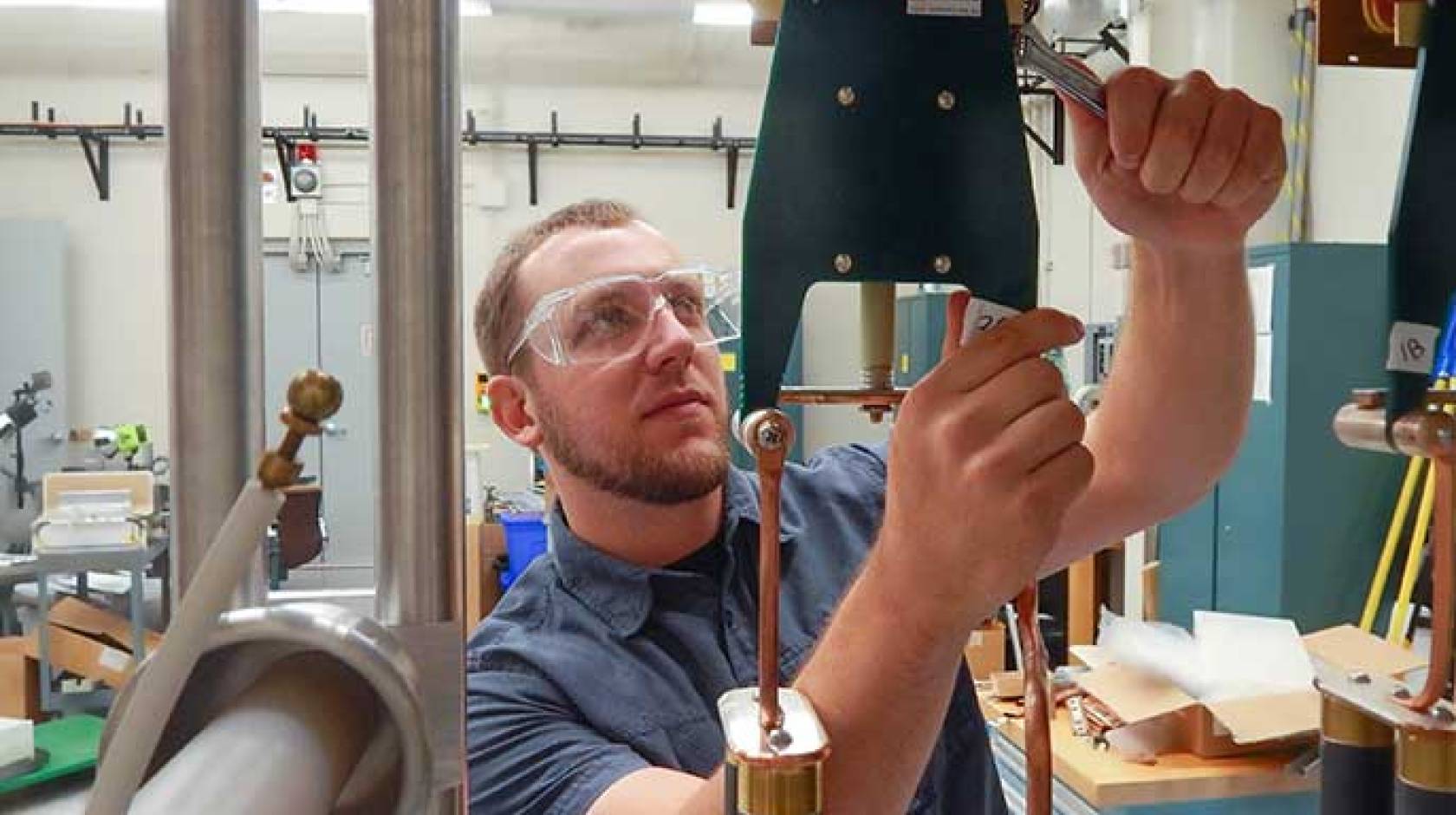Kenneth K. Ma, Lawrence Livermore Lab

California employers have created a pipeline to train and educate active-duty service members and veterans for careers in advanced manufacturing to fill a workforce shortage for a burgeoning industry.
Lawrence Livermore and Lawrence Berkeley national laboratories, NASA Ames Research Center and NASA Jet Propulsion Laboratory and other employers are seeking service members for a plethora of high-paying advanced manufacturing positions. They are collaborating with academia, government agencies and nonprofits to develop an educational and technical training program that will prepare men and women in uniform for a disruptive industry that pays an average of $77,500 a year.
Known as the Troops to Technology Workforce Development Initiative or T3WDI, this unique program creates a pipeline to help service members and vets develop highly specialized skills. It intends to use higher education to provide relevant curriculum to service members, companies to identify and hire them, and government agencies and nonprofits to provide existing resources to help with the transition from military to civilian workforce.
“T3WDI is an exciting program that helps America’s heroes find meaningful careers that builds off the technical training they received in the military, and it fills a shortage of high-skilled workers for an industry that’s critical for California and the nation’s economy,” said Beth McCormick, LLNL Engineering’s recruiting and diversity manager, who is helping coordinate efforts to develop the program. “Veterans are highly motivated and disciplined individuals who bring tremendous value to many employers.”

Credit: Julie Russell/LLNL
T3WDI’s concept is based on existing programs such as the one developed by Lawrence Livermore, Alameda County Workforce Investment Board (WIB), Las Positas College (LPC), the nonprofit growth sector, and a group of California community colleges and national labs. The consortium developed a core curriculum for service members focusing on the needs of California employers for careers in science, technology, engineering and math (STEM).
During T3WDI, a service member would first connect with a college and company prior to his/her transition into the civilian workforce. Companies and colleges collaborate to identify the technical skills gap service members need to overcome, coursework needed to attain those skills and potential pathways to join a company as an intern or apprentice while coursework is being completed. Nonprofits serve as a hub to connect service members with companies and colleges, while government agencies provide resources such as Workforce Investment Boards and the Post-9/11 GI Bill.
“T3WDI is important because advanced manufacturing is critical to our nation’s competitiveness at all levels,” said Brynt Parmeter, a principal with BMNT Partners, a Palo Alto-based consulting group that’s helping develop the program. “Given growth and turnover, the current advanced manufacturing workforce needs new members, and this program helps deliver a top-notch workforce.”
Approximately 20,000 service members transition every month from across the active, national guard and reserve components, according to Department of Defense statistics. While there are many employment opportunities in various industries for them, not many jobs offer the high salaries of advance manufacturing, which includes 3D printing. Right now, this industry has roughly 90,000 unfilled jobs, with a projected growth to more than 800,000 jobs by 2020, according to BMNT Partners.
“Although Lawrence Livermore benefits by developing service members for its technical workforce, T3WDI will also help our mission of boosting economic development,” McCormick said. “The lab’s goal is to use the program to train 2,500 service members for advance manufacturing roles in the next five years.”
In addition to California, T3WDI programs are being developed in Kansas and Mississippi. These three pilot programs will serve as the foundation for dozens of programs throughout the country seeking to provide economically critical and lucrative career opportunities for tens of thousands of service members over the next decade.
Program participants also include: LPC, Ohlone College, Palomar College, San Francisco State University, Foundation for California Community Colleges, BMNT Partners, Visionary Center for Sustainable Communities, Institutes for Manufacturing Innovation, California National Guard Office of the Adjutant General, California National Guard Work for Warriors Program, Army Reserve Career Division, U.S. Special Operations Command, Growth Sector, WIB, U.S. Department of Labor VETS Program and California Department of Employer Development (EDD).

